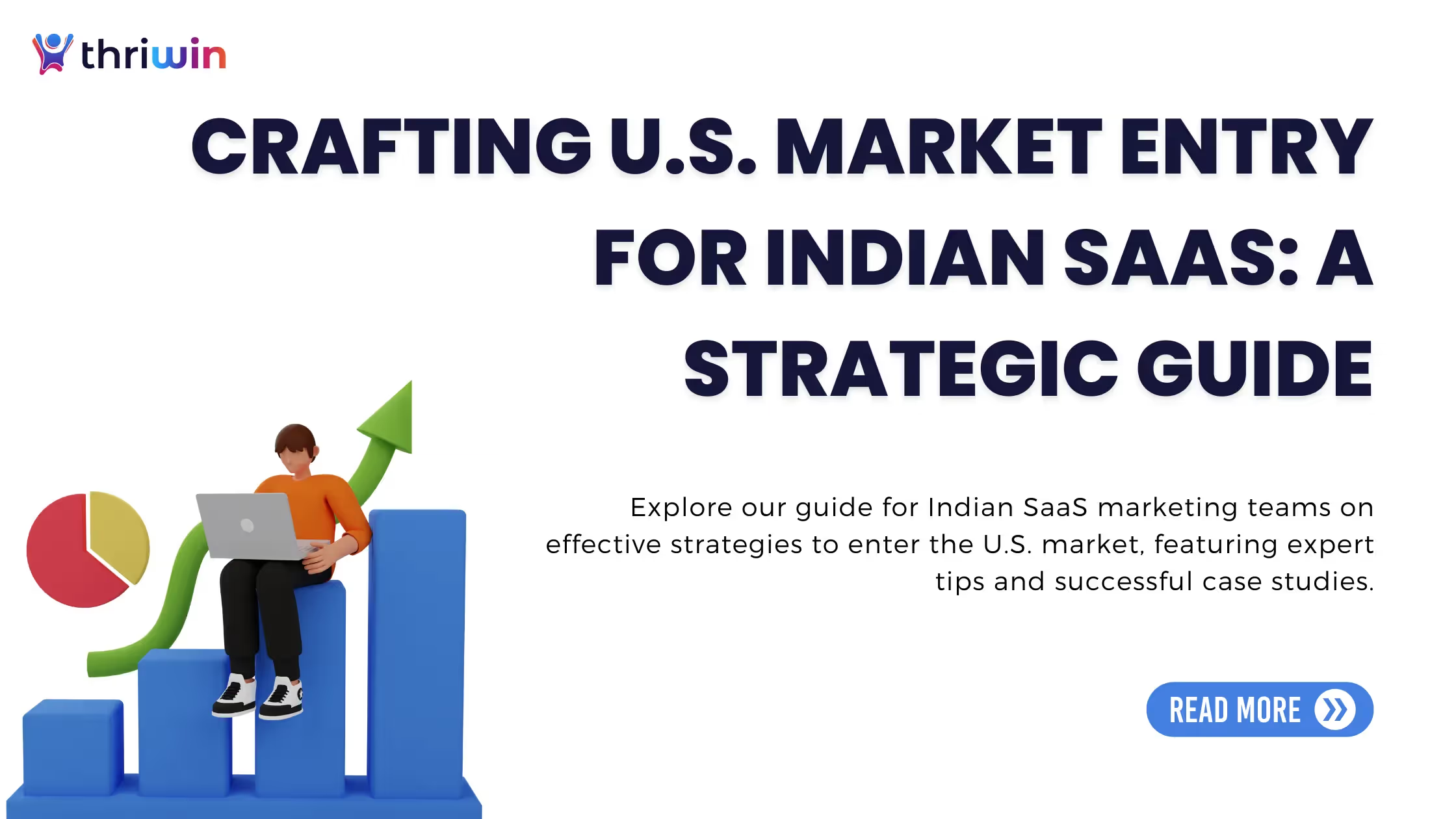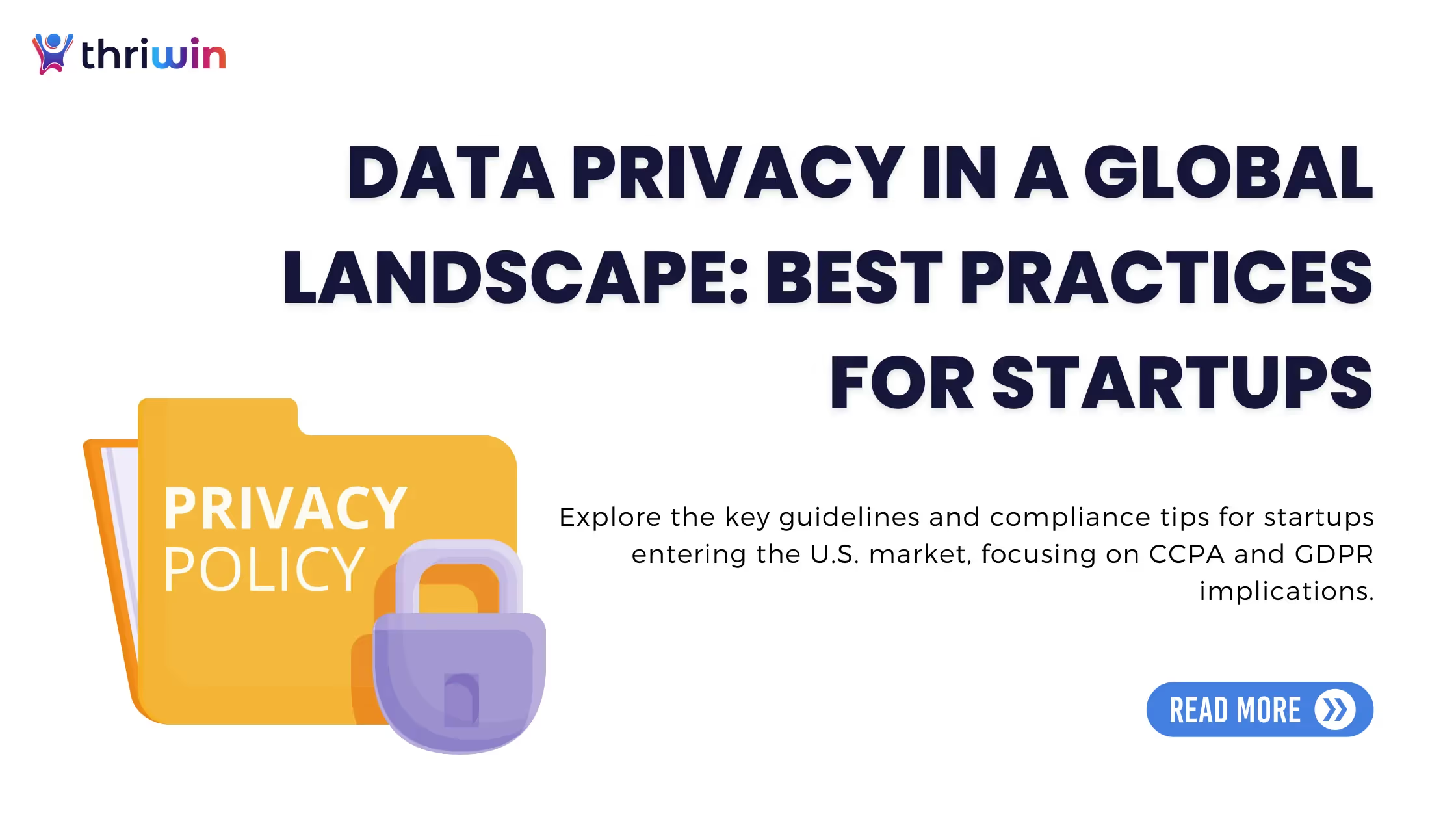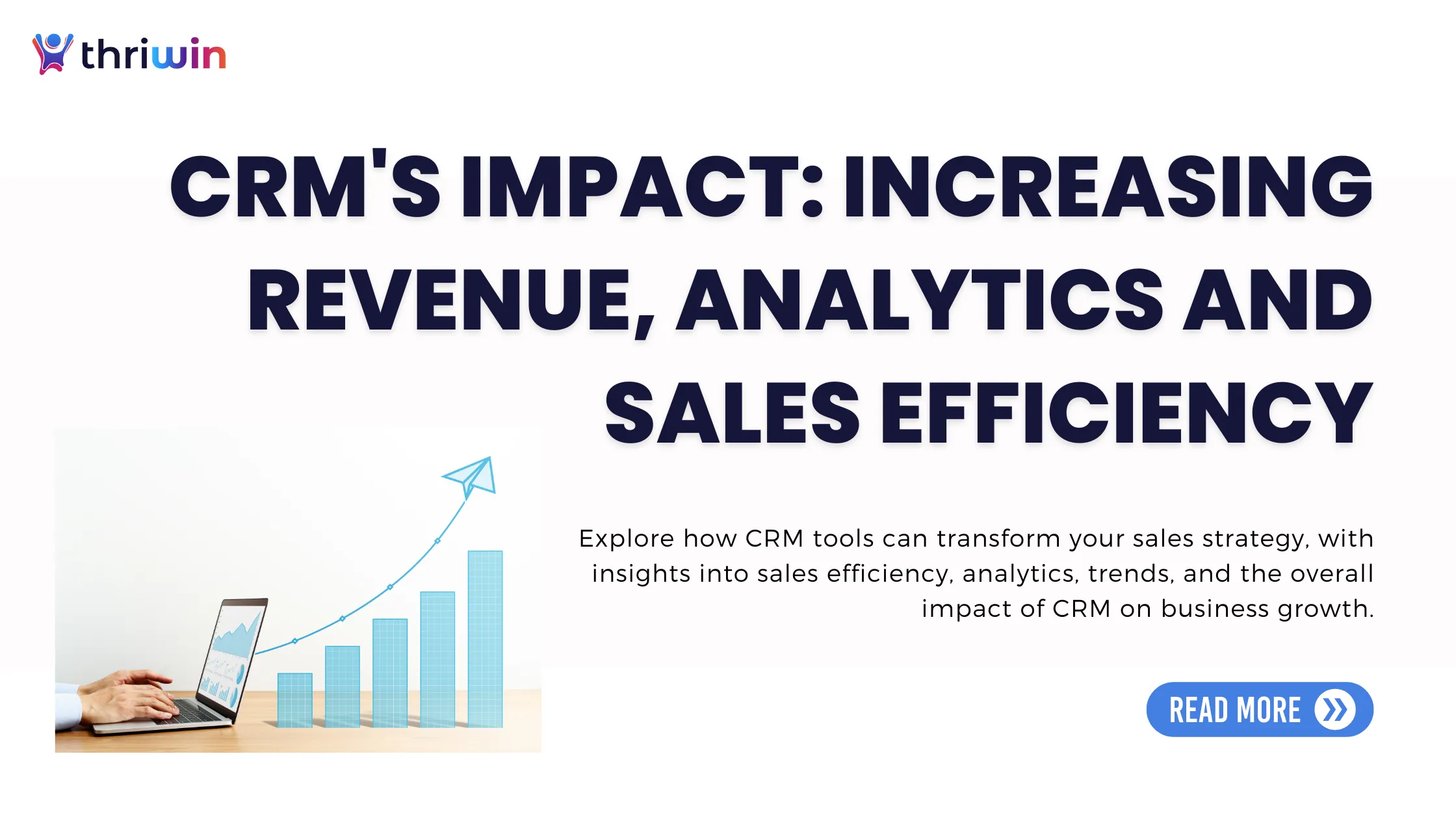The U.S. market represents a golden opportunity for Indian SaaS companies, but it comes with its unique set of challenges. With its vast landscape, diverse demographic, and competitive environment, entering the U.S. market requires more than just a great product; it demands a strategic approach tailored to this dynamic ecosystem. This guide delves into the crucial steps Indian SaaS marketing teams must consider to carve out their niche successfully in the United States.
Tailoring a SaaS Go-to-Market Strategy for the U.S.
Entering the U.S. market requires a carefully crafted go-to-market strategy that addresses the unique characteristics and complexities of this diverse economic landscape. Indian SaaS companies must meticulously analyze the market, segment their potential customers accurately, and position themselves strategically against competitors. Here’s how to approach each of these crucial components:
Market Analysis
The initial step in your market entry strategy should be a comprehensive market analysis. Understanding the U.S. market is foundational, as it varies significantly across different states and sectors. Start by assessing the overall market size and explore specific growth trends and economic indicators that can influence your product's success. It's essential to identify industries that are experiencing rapid growth or transformation, as these sectors often have a high demand for innovative SaaS solutions. For instance, healthcare, education, and real estate in the U.S. are increasingly adopting SaaS products to improve efficiency and customer service. By pinpointing these opportunities, you can tailor your offerings to meet the specific needs of these promising sectors.
Customer Segmentation
The diversity of the U.S. market means that a one-size-fits-all approach is unlikely to yield the best results. Segmenting your potential customer base allows for more personalized and effective marketing strategies. Consider variables such as demographic factors, business size, the specific industry, and even regional cultural values when segmenting your market. For example, a SaaS product tailored for small businesses in technology-savvy regions like Silicon Valley will differ from one aimed at large manufacturing firms in the Midwest. This nuanced approach to customer segmentation ensures that your marketing efforts are directed towards the most receptive audiences, maximizing your penetration and impact in the market.
Competitive Positioning
With numerous established SaaS giants and emerging startups, the U.S. market is highly competitive. To carve out your niche, you must conduct a detailed competitive analysis to understand both your direct and indirect competitors. This analysis should include a deep dive into competitors' product offerings, pricing strategies, customer service, and market share. Recognizing their strengths and weaknesses allows you to position your SaaS product as a superior alternative. For example, if competitors are lacking in customer support or customization options, these could be areas where your product can stand out. By clearly articulating your product's unique value propositions and benefits, you can differentiate your SaaS solution and capture the attention of potential customers.
Developing a SaaS Marketing Plan for U.S. Consumers
Creating a compelling marketing plan tailored to U.S. consumers is pivotal for the successful introduction and sustained growth of an Indian SaaS product in the U.S. market. This plan should integrate various digital strategies, emphasise content marketing, and effectively utilize social media to engage potential users. Here's a breakdown of these critical elements:
Digital Marketing Strategies
Digital marketing is essential in reaching and converting U.S. customers, where online presence often dictates market visibility. An effective strategy should include:
- Search Engine Optimization (SEO): Optimize your website and content to rank higher in U.S.-based search engine results, focusing on keywords that are most relevant to your target segments. This increases visibility and drives organic traffic to your site.
- Pay-Per-Click (PPC) Advertising: Utilize PPC campaigns to generate immediate traffic from potential customers. Platforms like Google Ads and Bing Ads offer powerful tools to target specific demographics, geographic locations, and even user behaviors.
- Email Marketing: Developing personalized email campaigns is key to nurturing leads and converting them into customers. By segmenting your email list, you can deliver tailored messages that resonate with different user groups based on their interactions with your product. Tools like Thriwin can enhance your email marketing strategies by providing insightful analytics and automation tools. These resources help in fine-tuning your approach to meet the specific needs of your target audience, ensuring that your communications are both effective and engaging.
Content Marketing
Content is a critical tool in educating, engaging, and converting prospects. Your content marketing strategy should focus on creating valuable content that addresses the specific needs and pain points of U.S. businesses:
- Blogs and Articles: Regularly publish informative and insightful articles that cater to the interests of your target market. Topics might include industry trends, how-to guides, and best practices relevant to your SaaS offering.
- Whitepapers and E-books: Produce in-depth whitepapers and e-books that provide detailed information on complex subjects. These resources can help position your company as a thought leader in your industry.
- Webinars and Online Workshops: Host webinars and workshops to demonstrate the utility and benefits of your SaaS product. These can be excellent opportunities for direct interaction with potential customers.
Social Media Engagement
Social media platforms are invaluable for connecting with and expanding your audience in the U.S. Each platform serves different purposes and reaches different audiences:
- LinkedIn: Ideal for B2B companies, LinkedIn can help you network with industry professionals, share content, and promote webinars.
- Twitter: Use Twitter to engage in industry conversations, provide customer support, and quickly share updates about your product.
- Facebook and Instagram: These platforms are great for building brand awareness and community engagement through more visual content and interactive posts.
Video Marketing
Video content is increasingly important in digital marketing, thanks to its high engagement rates. Develop videos that showcase the features and benefits of your SaaS product, customer testimonials, and behind-the-scenes looks at your company.
- Tutorial and Demo Videos: Create videos that demonstrate how your product works and how customers can get the most out of it.
- Customer Testimonial Videos: Share stories from satisfied customers to build trust and provide social proof.
Influencer Partnerships
Collaborating with influencers in the tech industry can help amplify your reach and credibility. Identify influencers who resonate with your target market and work with them to create content that introduces your SaaS product to a broader audience.
Events and Outbound Methods
In addition to digital strategies, incorporating events and outbound methods can significantly enhance your marketing plan, especially for enterprise sales:
- Industry Conferences and Trade Shows: Participate in industry-specific conferences and trade shows to showcase your product, network with potential clients, and stay updated on industry trends.
- Webinars and Workshops: Organize webinars and workshops to demonstrate your product's value and engage directly with potential clients.
- Cold Outreach and Direct Mail: Utilize cold outreach methods such as cold emails, calls, and direct mail campaigns to reach potential clients. Personalize these communications to address the specific needs and challenges of your prospects.
- Sales Partnerships: Use lead generation partners that can help you crack lead generation by providing fractional SDRs. Avoid fixed retainership as much as possible in such partnerships and negotiate a cost per lead provided or cost per meeting arranged.
Inside Sales Strategies
Inside sales strategies are crucial for converting leads into customers, particularly for enterprise sales:
- Lead Qualification: Develop a robust lead qualification process to prioritize high-potential leads and ensure your sales team focuses on the most promising prospects.
- Sales Cadences: Implement structured sales cadences that include a mix of email, phone, and social media touchpoints to engage leads systematically.
- CRM Integration: Use a comprehensive CRM like Thriwin to manage sales activities, track interactions, and analyze data to improve sales efficiency and effectiveness.
Channel Selection Matrix Based on ACV per Client
To help startups choose the appropriate marketing channels based on the Annual Contract Value (ACV) per client, the following matrix provides guidance on which strategies to prioritize:
This matrix is inspired by industry practices and insights from resources such as "Crossing the Chasm" by Geoffrey A. Moore and HubSpot's Marketing Blog. For detailed strategies and more information, you can refer to Forrester Research Reports and Gartner’s Marketing Research.
Cultural Considerations
When entering the U.S. market, Indian SaaS companies must not only adapt their marketing strategies to the business landscape but also to the cultural nuances of the U.S. audience. Understanding and integrating cultural considerations into your marketing efforts is crucial for resonating with and engaging U.S. consumers effectively. Here’s how cultural differences can impact marketing strategies and the importance of cultural adaptation:
Understanding Regional Variations
The United States is a mosaic of diverse cultures with varying preferences, behaviors, and expectations. Marketing strategies that work in one region may not be effective in another. For example, marketing tactics used in cosmopolitan areas like New York or San Francisco might differ from those effective in the Midwest or the South due to differences in lifestyle, economic factors, and local customs.
Localizing Content: Tailor your marketing content to reflect local dialects, expressions, and regional specificities. This localization can significantly increase the relevance and appeal of your marketing messages.
Regional Marketing Campaigns: Design campaigns that cater to the specific interests, needs, and cultural backgrounds of people in different regions. This might include targeted advertisements, localized product features, or community engagement initiatives.
Emphasizing Cultural Sensitivity
Cultural sensitivity is crucial to avoid miscommunications and to foster positive relationships with U.S. customers. Being culturally aware can prevent potential misunderstandings and help build trust.
Cultural Training: Provide cultural training for your marketing teams to ensure they understand U.S. social norms, business etiquette, and communication styles. This training can include nuances such as the importance of punctuality, directness, or the typical U.S. humor.
Inclusive Marketing: Ensure that your marketing materials are inclusive, reflecting the diversity of the U.S. population in terms of race, gender, and lifestyles. Inclusivity not only avoids alienation of potential customers but also enhances brand reputation.
Communication Training: Offer communication training to your teams to bridge cultural gaps, particularly focusing on the nuances of U.S. communication styles, which can be more direct and succinct compared to Indian styles.
Adapting to U.S. Business Culture
The business culture in the U.S. can be quite different from that in India, particularly in terms of communication, decision-making, and business relationships. Understanding these differences is essential for effective marketing and sales strategies.
Communication Styles: U.S. business culture tends to value direct and succinct communication. Ensure that your marketing communications are clear and to the point, avoiding any ambiguity that might be more acceptable in other cultures.
Decision-Making: In the U.S., decision-making can be swift, and businesses often value speed and efficiency. Highlight how your SaaS product can streamline operations, enhance productivity, and provide quick returns on investment.
Building Relationships: While initial transactions may be straightforward, building long-term relationships is crucial for sustained success. Use your marketing strategies to not just sell a product but to build a community around your brand, offering continuous support and engaging with customers through various channels.
Integrating these cultural considerations into your marketing plan is vital for Indian SaaS companies entering the U.S. market. By respecting and adapting to cultural differences, your company can enhance its marketing effectiveness and build stronger, more productive relationships with U.S. customers.
US Market Entry Campaign Examples
1. Localized Launch Events:
Showcase your product's value through targeted events in key U.S. cities. organize localized launch events in tech hubs like San Francisco and New York City, highlighting how AI-driven solutions revolutionize workflow management for startups and enterprises alike.
2. Influencer Collaborations:
Amplify brand credibility by partnering with influencers who resonate with your target market. Collaborate with tech influencers on platforms like YouTube and LinkedIn to create engaging content that introduces your product's features and benefits to a wider audience, garnering thousands of views and engagements.
Flexible Pricing and Promotions:
Incentivize quick adoption with flexible pricing plans and promotional offers. For instance, Thriwin offers a pay-per-use plan with an initial $100 credit limit which can be explored without adding any credit card, allowing users to experience advanced features and driving a surge in sign-ups and conversions during the launch phase.
4. Targeted Digital Advertising Campaigns:
Reach decision-makers with targeted ads across platforms and industry-specific websites. Run targeted PPC campaigns highlighting cost-saving benefits for CFOs in finance industries, resulting in a high click-through rate and lead generation.
5. Content localization for SEO:
Improve search visibility by optimizing content with localized keywords and insights. Create region-specific landing pages and blog posts optimized for SEO, ranking higher for relevant search queries, and driving organic traffic from U.S.-based users.
6. Customer Referral Programs:
Leverage customer referrals to expand reach and generate qualified leads. Introduce a referral program offering discounts or rewards for successful referrals, leading to a steady influx of qualified leads from trusted sources.
7. Thought Leadership Webinars and Whitepapers:
Establish thought leadership with insightful webinars and industry-focused whitepapers. Conduct webinars on industry-specific strategies and publish whitepapers on emerging trends, positioning your brand as a leader in the SaaS landscape.
Conclusion
For Indian SaaS companies, entering the U.S. market involves strategic planning and adaptation beyond mere geographic expansion. A comprehensive CRM like Thriwin is crucial for bolstering the sales and marketing efforts of Indian startups. Thriwin’s lead management system effectively organizes and prioritizes sales leads, ensuring teams focus on the most promising prospects to boost conversion rates. Additionally, its conversation intelligence technology provides valuable insights into customer interactions, enabling companies to tailor their communications to match the preferences and expectations of U.S. consumers. Explore how Thriwin can support your venture's success in the dynamic U.S. environment.
%201.svg)





.webp)
